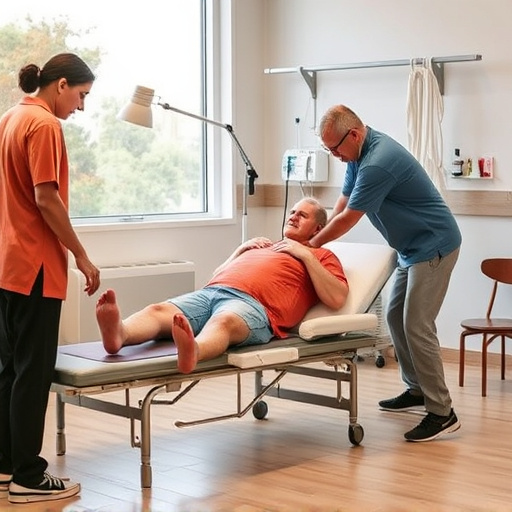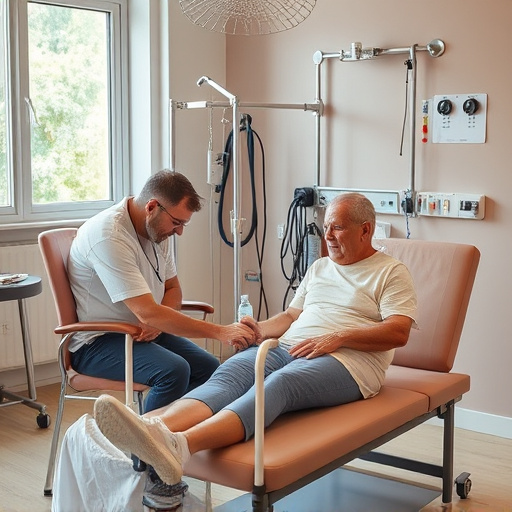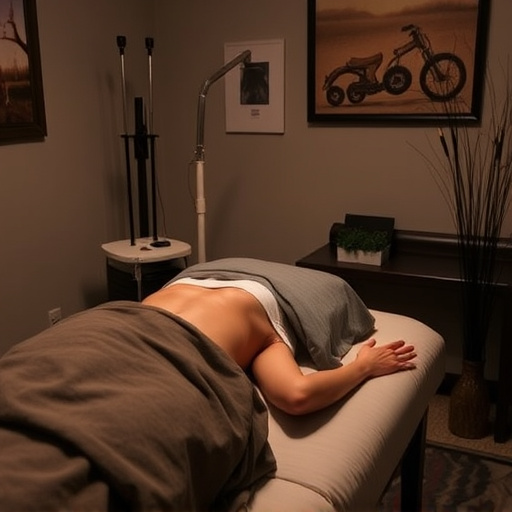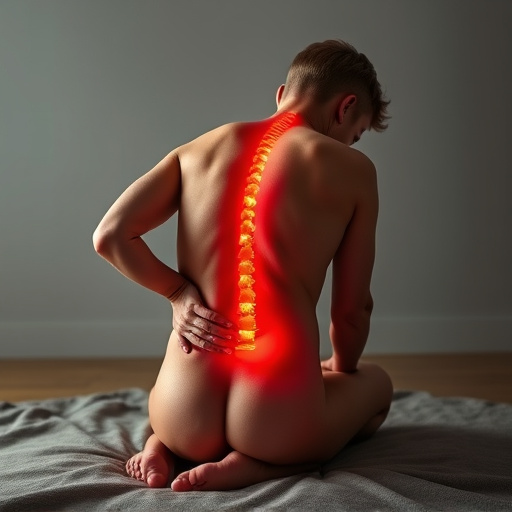Ergonomic injury treatment at home combines exercises, stretching, and space modifications to alleviate discomfort from sitting or repetitive tasks. Techniques like manual therapy and adjustments empower individuals to manage conditions like back pain and carpal tunnel syndrome without frequent clinic visits. Creating an ergonomic environment involves simple changes like adjusting screen height and chair support, incorporating movement facilitators, and engaging in targeted stretches and strengthening exercises. Non-invasive therapy options and personalized treatment plans, guided by healthcare professionals, offer effective joint pain relief and prevent future injuries, fostering faster recovery in the comfort of home.
Discover the best practices for managing and supporting at-home recovery from ergonomic injuries. This comprehensive guide explores effective strategies to address common work-related musculoskeletal disorders without leaving your living space. Learn how to create an ergonomic environment that promotes healing, discover non-invasive therapy techniques, and gain insights into tailored home care for a faster, more comfortable road to recovery.
- Understanding Ergonomic Injury Treatment at Home
- Creating an Ergonomic Environment for Recovery
- Non-Invasive Therapy Options and Techniques
Understanding Ergonomic Injury Treatment at Home

Ergonomic injury treatment at home is a proactive approach to managing and alleviating discomfort associated with prolonged sitting or repetitive tasks. It involves implementing specific strategies and techniques tailored to improve posture, enhance ergonomics, and promote mobility improvement. This method aims to address the root causes of ergonomic injuries, such as back pain, neck stiffness, and carpal tunnel syndrome, without always relying on frequent visits to a clinic.
At-home treatment often includes a combination of exercises for spinal adjustments, stretching routines, and modifications to work or living spaces to ensure better posture and comfort. Chiropractic treatment techniques, like manual therapy and adjustment, can also be incorporated as part of a comprehensive home care plan. Such practices empower individuals to take charge of their well-being, offering relief from pain and potentially preventing further injuries in the long term.
Creating an Ergonomic Environment for Recovery

Creating an ergonomic environment is a crucial step in supporting at-home recovery from ergonomic injury treatment. This involves adjusting your workspace and living areas to promote proper posture, reduce strain, and prevent further harm. Simple changes like elevating your computer screen to eye level, ensuring your chair provides adequate lumbar support, and positioning your keyboard and mouse for comfortable reach can make a significant difference. Customizing these aspects of your space encourages healthy habits that contribute to effective ergonomic injury treatment.
Additionally, incorporating elements that facilitate movement and flexibility can aid in managing soft tissue injuries. Consider adding adjustable standing desks or exercises designed for sciatica relief to your daily routine. Engaging in physical therapy at home, focusing on stretching and strengthening exercises tailored to your specific needs, is another powerful tool in your ergonomic injury treatment arsenal. This proactive approach ensures a supportive environment that complements professional care, ultimately fostering faster and more complete recovery.
Non-Invasive Therapy Options and Techniques

At-home ergonomic injury treatment often involves non-invasive therapy options that are both effective and convenient. Techniques such as heat or ice therapy, gentle stretching exercises, and over-the-counter pain relievers can significantly alleviate joint pain relief and reduce inflammation. These simple yet powerful tools help in managing symptoms, promoting healing, and restoring mobility without the need for aggressive interventions.
Personalized treatment plans tailored to individual needs are key to successful ergonomic injury treatment. Incorporating specific exercises targeted at strengthening muscles and improving posture, along with modifications to daily routines and work environments, can provide lasting back pain relief. It’s important to consult healthcare professionals who can guide you through these options, ensuring a safe and effective approach to managing your ergonomic-related injuries in the comfort of your home.
Ergonomic injury treatment at home is a feasible and effective approach when guided by proper understanding and practices. By creating an optimal environment, utilizing non-invasive therapy techniques, and adopting consistent care routines, individuals can successfully manage and recover from ergonomic injuries. Incorporating these best practices empowers folks to take control of their well-being and navigate their path to healing efficiently.














